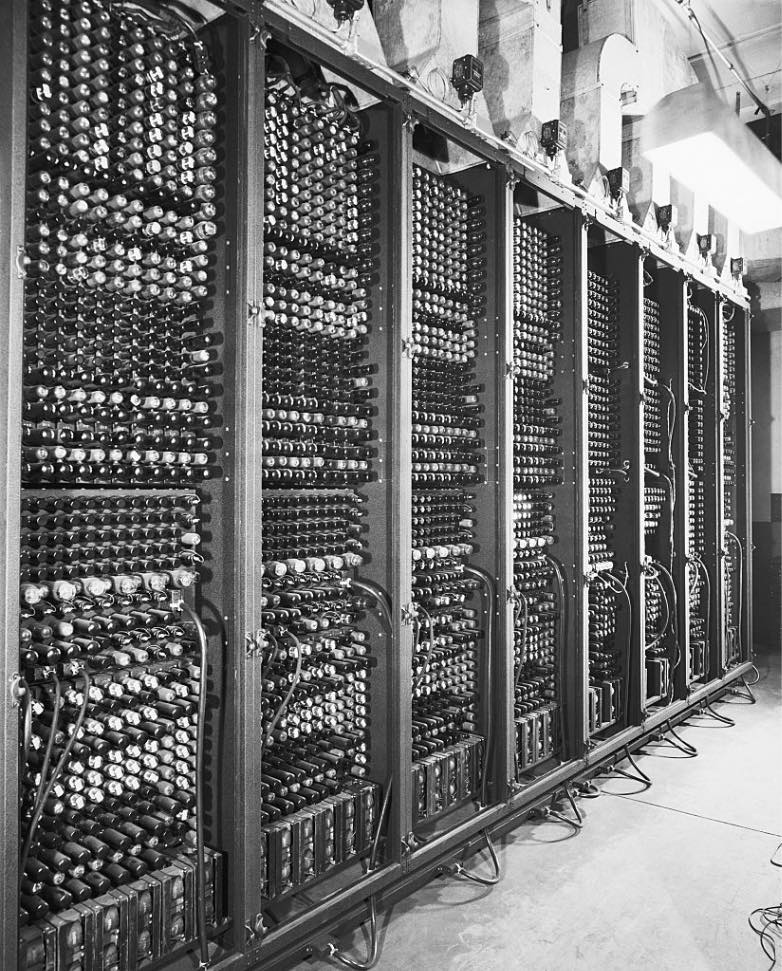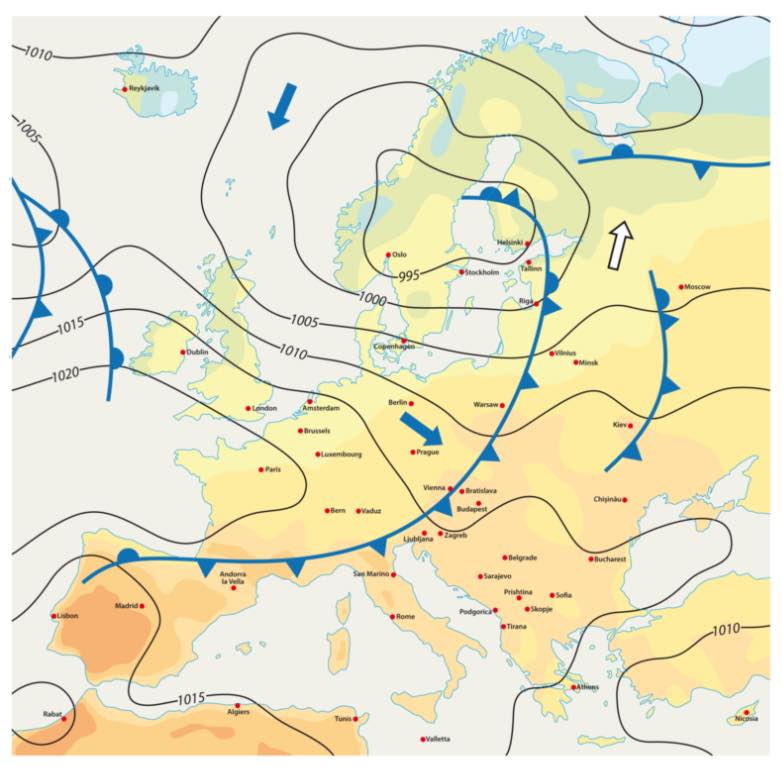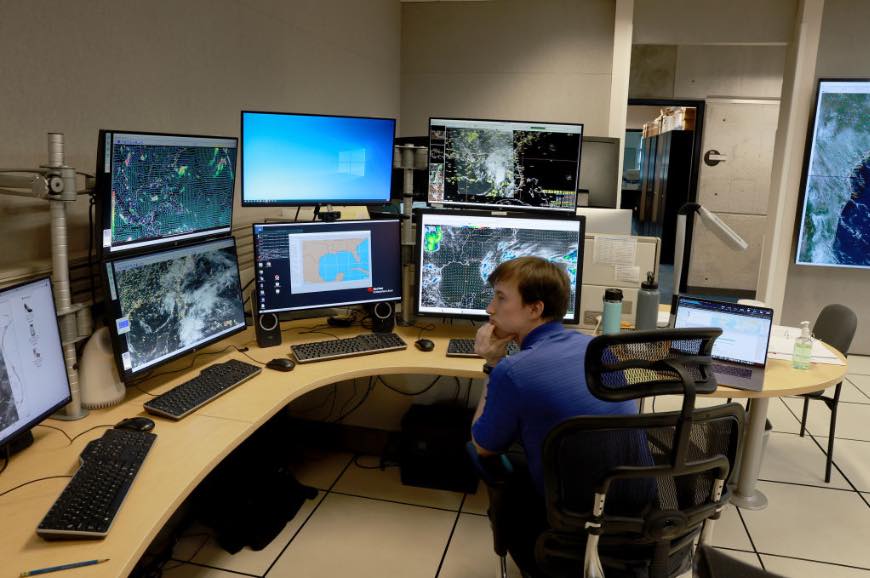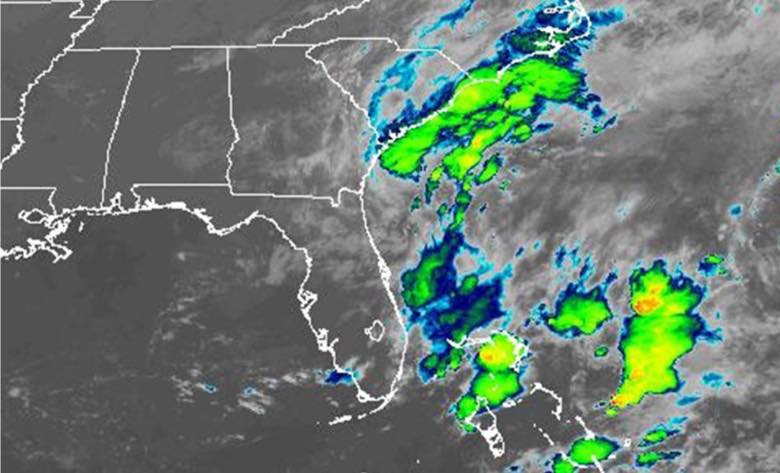The emergence of language models such as ChatGPT has stimulated public interest in Artificial Intelligence (AI), fuelling claims about how this technology will revolutionise a wide range of fields. Some of these may be dubious or irrelevant; the real power of AI will be demonstrated in solving the big problems for which human capacities are inadequate. And certainly one of the biggest today is climate change. What can AI do for this enormous challenge of our time?

At the beginning of the 20th century, the Norwegian physicist Vilhelm Bjerknes set himself a seemingly intractable goal: to make meteorology an exact science. At the time, it was common practice to try to predict the weather by using historical maps that showed an atmospheric situation analogous to the present one, on the assumption that things would progress in a similar way. First Bjerknes and then the English Quaker scientist Lewis Fry Richardson came up with equations that tried to describe the physics of the atmosphere. But in those pre-computer days, computation was still lacking. When ENIAC, the first electronic general computer, produced its first weather forecast in 1950, Richardson called it an “enormous scientific advance,” even though it took ENIAC nearly 24 hours to produce its 24-hour forecast.
Machine learning to define weather disturbances
Today, mathematical models inspired by the Bjerknes and Richardson equations and fed with observed data remain the most widely used system for weather forecasting, with significant improvements in reliability over the past few decades. But another method, machine learning, or AI, is slowly making inroads. As explained by atmospheric scientists Russ Schumacher and Aaron Hill of Colorado State University, these systems process countless maps of the past to learn what the trend will be. Interestingly, the idea is reminiscent of the classic system before Bjerknes and Richardson, but the computing power of AI reaches heights that humans cannot.

And beyond the weather, which is what happens in the atmosphere in the short term, is the climate, the accumulation of observations over the long term. As the US National Oceanic and Atmospheric Administration (NOAA) defines it, “climate is what you expect, and weather is what you get”. Today it may be raining in Seville and sunny in London, but this is clearly not a reflection of the weather in either city. Alterations caused by climate change, such as the intensification of the water cycle, complicate predictions, and so scientists are training AI systems to fill in the gaps where numerical models fall short.
Predicting the effects of climate change
Broadly speaking, climate scientists use AI systems for two purposes: observation and modelling. For the former, today the volume of data and records is now so vast that it is unmanageable for humans, but AI can make sense of it all. A team at the Netherlands Institute for Space Research is working on an AI system that scans 12 million satellite observations of the Earth every day to detect large emissions of methane, a potent greenhouse gas. Climate Trace uses AI to monitor greenhouse gas emissions. These tools can produce meta-analyses—studies that collect and synthesise a large number of previous studies—at a level unattainable by humans, for example bringing together more than 100,000 studies on specific impacts of climate change to conclude that they already affect 80% of the world’s land area and 85% of the global population.

The second objective, modelling, is to create systems capable of predicting both the impact of climate change on human society and, conversely, the impact of our activities – such as energy production and use, or agricultural practices—on climate change, in order to mitigate both. Thus, AI can predict whether cities are meeting their emission reduction commitments, or how and when internationally agreed warming thresholds will be breached.
A digital twin for weather forecasting
Of course, observation and modelling go hand in hand. IBM and NASA are collaborating on a project in which two of IBM’s foundation models—machine learning systems that are trained on a large volume of data to solve different tasks, such as language models like ChatGPT—will be trained on 300,000 scientific studies and data collected by the space agency’s satellites, respectively. The models will be able to answer the question of how aerosols will affect climate change, and to model such effects.

Possibly one of the most ambitious projects is the European Union’s Destination Earth, which aims to create a “digital twin” of the Earth. According to the European Commission, “this model will monitor, simulate and predict the interaction between natural phenomena and human activities.” In this way, it will be able to anticipate both the effects of climate change and its meteorological phenomena—with detailed predictions years in advance— and, conversely, the impact of human policies and activities on climate change.
In short, as detailed by Climate Change AI, an organisation specialising in AI and climate change, there is a long list of areas and applications where these technologies can help us. But let’s not forget the dark side: it is also AI algorithms that spread denialist and conspiratorial ideas on YouTube, social networks or even via ChatGPT. When it comes to climate change, we humans will also have to learn to manage the risks of AI.
Javier Yanes
Comments on this publication